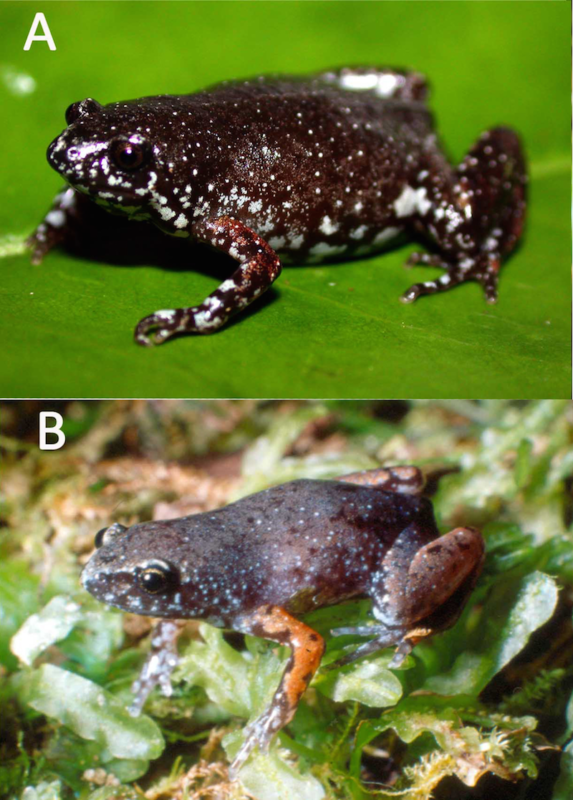 Three new “cryptic” species of frog have been discovered in Brazil’s Atlantic Forest, one of the the world’s most degraded biodiversity hotspots. On looks alone, the new species are nearly identical to their brethren in the genus Chiasmocleis, so the researchers relied on DNA and skeletal analysis to make the discovery, which was published in PeerJ last month.
Three new “cryptic” species of frog have been discovered in Brazil’s Atlantic Forest, one of the the world’s most degraded biodiversity hotspots. On looks alone, the new species are nearly identical to their brethren in the genus Chiasmocleis, so the researchers relied on DNA and skeletal analysis to make the discovery, which was published in PeerJ last month.
“Morphologically, they were very similar, so until we had additional points of data, we really didn’t know what to look for,” Rafael de Sá, a study co-author and researcher at the University of Richmond, told Mongabay.
It’s what’s on the inside that matters – at least for cryptic species, organisms that appear nearly identical yet are genetically distinct. What makes them cryptic, of course, makes them difficult to identify, obliging scientists to dig deep into their toolbox.
To discover Chiasmocleis migueli, C. veracruz, and C. altomontana – three new additions to the genus commonly known as “humming frogs” – the researchers first turned to molecular analysis. Using DNA from several specimens that were collected from the field, the researchers produced what’s called a “phylogenetic tree,” a hypothesis of genetic relationships, not so unlike a family tree. The tree revealed three genetically distinct “clusters” – each representing a new candidate species, in this case – sending the first strong signal of an impending discovery.
In search of another line of evidence, the researchers then analyzed skeletons of each specimen.-READ MORE
No comments:
Post a Comment